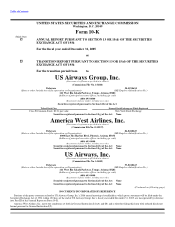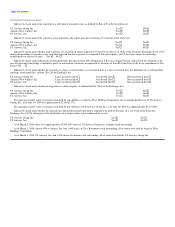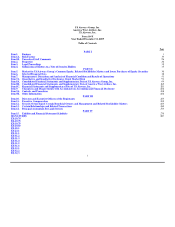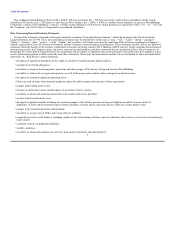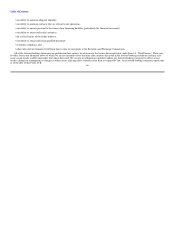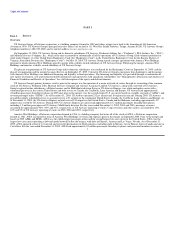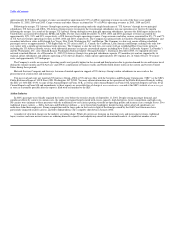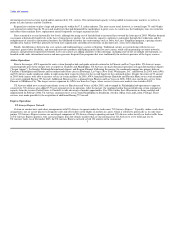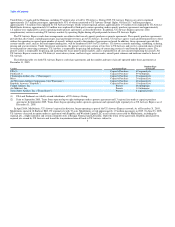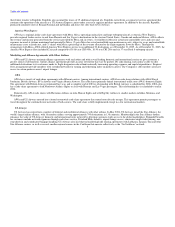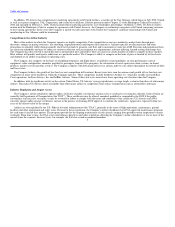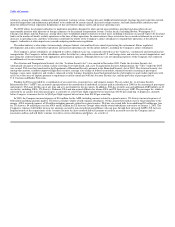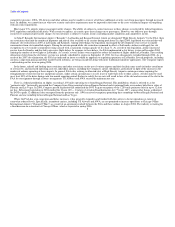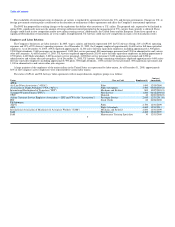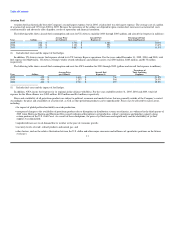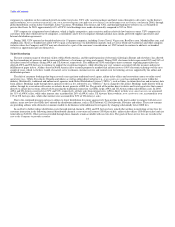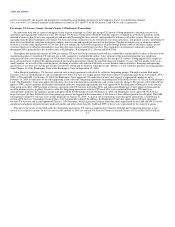US Airways 2005 Annual Report Download - page 12
Download and view the complete annual report
Please find page 12 of the 2005 US Airways annual report below. You can navigate through the pages in the report by either clicking on the pages listed below, or by using the keyword search tool below to find specific information within the annual report.
Table of Contents
In addition, US Airways has comprehensive marketing agreements with United Airlines, a member of the Star Alliance, which began in July 2002. United,
as well as its parent company, UAL Corporation, and certain of its affiliates, filed for protection under Chapter 11 of the Bankruptcy Code on December 9,
2002 and emerged on February 1, 2006. United assumed these marketing agreements in its bankruptcy proceedings. On March 3, 2006, US Airways filed a
motion with the Bankruptcy Court to assume its agreements with United; however, the Company is continuing to negotiate with United concerning revisions
to the existing agreements. In the event the Company is unable to reach agreement with United, the Company's codeshare relationship with United and
membership in Star Alliance could be terminated.
Competition in the Airline Industry
Most of the markets in which the Company operates are highly competitive. Price competition occurs on a market-by-market basis through price
discounts, changes in pricing structures, fare matching, target promotions and frequent flyer initiatives. Airlines typically use discount fares and other
promotions to stimulate traffic during normally slack travel periods to generate cash flow and to maximize revenue per ASM. Discount and promotional fares
are often non-refundable and may be subject to various restrictions such as minimum stay requirements, advance ticketing, limited seating and change fees.
The Company has often elected to match discount or promotional fares initiated by other air carriers in certain markets in order to compete in those markets.
Most airlines will quickly match price reductions in a particular market. The Company's ability to compete on the basis of price is limited by its fixed costs
and depends on its ability to maintain its operating costs.
The Company also competes on the basis of scheduling (frequency and flight times), availability of nonstop flights, on-time performance, type of
equipment, cabin configuration, amenities provided to passengers, frequent flyer programs, the automation of travel agent reservation systems, on-board
products, markets served and other services. The Company competes with both major full service airlines and low-cost airlines throughout its network of hubs
and focus cities.
The Company believes the growth of low-fare low-cost competition will continue. Recent years have seen the entrance and growth of low-fare low-cost
competitors in many of the markets in which the Company operates. These competitors include Southwest Airlines Co., which has steadily increased East
Coast operations, AirTran Airways, Inc. and JetBlue Airways. Some of these low cost carriers have lower operating cost structures than the Company.
In addition, with its significant activity in the eastern United States, US Airways' average trip distance, or stage length, is shorter than those of other major
airlines. This makes US Airways more susceptible than other major airlines to competition from surface transportation such as automobiles and trains.
Industry Regulation and Airport Access
The Company's airline subsidiaries operate under certificates of public convenience and necessity or certificates of commuter authority, both of which are
issued by the Department of Transportation (the "DOT"). These certificates may be altered, amended, modified or suspended by the DOT if the public
convenience and necessity so require, or may be revoked for failure to comply with the terms and conditions of the certificates. US Airways and AWA
currently operate under separate certificates, and are in the process of obtaining DOT approval to combine the certificates. Approval is expected within two
years of the effective date of the merger.
Airlines are also regulated by the U.S. Federal Aviation Administration (the "FAA"), primarily in the areas of flight operations, maintenance, ground
facilities and other operational and safety areas. Pursuant to these regulations, the Company's airline subsidiaries have FAA-approved maintenance programs
for each type of aircraft they operate. The programs provide for the ongoing maintenance of such aircraft, ranging from periodic routine inspections to major
overhauls. From time to time, the FAA issues airworthiness directives and other regulations affecting the Company's airline subsidiaries or one or more of the
aircraft types they operate. In recent years, for example, the FAA has issued or proposed mandates
6


